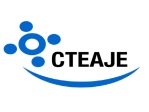The CTEAJE is an administrative body for cooperation between different administrations that support the administration of justice, as provided for in Article 5 of Law 30/1992, of 26 November, on the legal regime of public administrations and common administrative procedure. It is governed by the provisions of law 18/2011, of 5 July, and by its own Royal Decree (RD 396/2013). Law 30/1992 also applies to it.
Law 18/11, of 5 July, regulating the use of information and communication technologies in the Administration of Justice, establishes both in its preamble and in its articles, the need to create a body to establish the necessary guidelines to ensure the interoperability of the systems and computer applications of the Administration of Justice and cooperation between the different administrations, in addition to establishing the criteria on which the necessary collaboration should be based.
This body, the STATE TECHNICAL COMMITTEE FOR ELECTRONIC JUDICIAL ADMINISTRATION or “CTEAJE”, is specifically regulated in Royal Decree 396/2013, of 7 June, which regulates the State Technical Committee for Electronic Judicial Administration.
The CTEAJE enjoys organic and functional independence, by its very nature, as a coordinating body between Administrations, in which the Ministry of Justice, the General Council of the Judiciary, the State Attorney General’s Office and the Autonomous Communities with jurisdiction in matters of justice participate.
The fundamental mission of the CTEAJE is to establish the basis for the development of the Judicial Interoperability and Security Scheme. This body will promote compatibility and ensure interoperability. It is constituted as an institutional framework for cooperation between Administrations in the field of electronic administration. It also has important consultative functions in the field of its competences.
Its activity is very intense since Law 18/2011 defined a schedule of deadlines for the achievement of different milestones in the implementation of new technologies in the administration of justice so that these are interoperable despite the competences corresponding to different territories:
- A period of 4 years for the Administrations with jurisdiction over the administration of justice to guarantee interoperability between the systems at the service of the Administration of Justice (DA 3ª).
- The deadline is 5 years for the Administrations to have equipped the Judicial and Prosecutor’s Offices with procedural management systems that allow for the electronic processing of procedures, (DA 2ª).
The CTEAJE must establish and approve its Roadmap, a basic document that sets its global strategy and focuses the work of the CTEAJE on specific technological projects for the coming years.
Structure of the CTEAJE
The CTEAJE is a committee whose participants structure its activity through the Plenary, the Permanent Commission, the President and the General Secretariat.
In addition, the CTEAJE will be assisted by a Technical Office and will operate in Working Groups. Each member of the Committee will be able to provide the material and personal means necessary for it to carry out its tasks.
The composition of its bodies is established in the Royal Decree regulating the Committee:
- The Plenary: It is chaired by the Secretary of State for Justice and the Vice-President of the General Council of the Judiciary, rotating every 2 years. In the first initial cycle of the CTEAJE (2013-2015), the presidency is held by the Secretary of State for Justice, with the rest of the members being the following:
- The Vice-President of the General Council of the Judiciary.
- The Trial Chamber Prosecutor, Head of the Support Unit.
- One member for each of the Autonomous Communities with competences in this area, with the rank of Director General at least.
It shall also be composed of the Secretary, with voice but without vote.
- The PERMANENT COMMISSION: It is chaired by the Secretary General of the Administration of Justice and the Vice-president of the General Council of the Judiciary, following a biennial rotation. In the first initial cycle of the CTEAJE, the Secretary General of the Administration of Justice is the President, and the rest of the members were elected unanimously in the constitutive session that took place on 15 July 2013.
- The Chairman of the Committee is the Chairman of the Plenary.
- The General Secretariat attends to its functions both in the Plenary and in the Permanent Commission.

